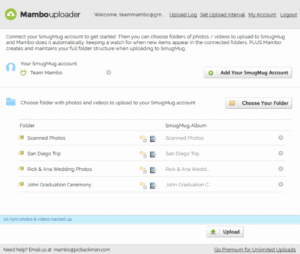-
Table of Contents
- Understanding the Impact of Background Apps on Windows 11 Performance
- Step-by-Step Guide: Disabling Background Apps in Windows 11
- Optimizing System Resources: Managing Background Apps in Windows 11
- Increasing Productivity: Minimizing Background App Distractions in Windows 11
- Troubleshooting Tips: Dealing with Persistent Background Apps in Windows 11
- Q&A
Disable background apps with Windows 11: Streamline your system for optimal performance.
To disable background apps with Windows 11, follow these steps:
1. Open the Start menu by clicking on the Windows icon in the taskbar.
2. Click on “Settings” (the gear icon) to open the Windows Settings.
3. In the Settings window, click on “Privacy & security.”
4. On the left-hand side, select “Background apps.”
5. Under the “Background apps” section, you will see a list of apps that are allowed to run in the background. Toggle off the switch next to the apps you want to disable.
6. You can also toggle off the “Let apps run in the background” switch at the top to disable background apps altogether.
7. Once you have made your desired changes, close the Settings window.
By following these steps, you can easily disable background apps on Windows 11.
Understanding the Impact of Background Apps on Windows 11 Performance
Understanding the Impact of Background Apps on Windows 11 Performance
Windows 11 is the latest operating system from Microsoft, offering a range of new features and improvements. One aspect that can significantly impact the performance of your system is the presence of background apps. These are applications that continue to run even when you are not actively using them, consuming valuable system resources. In this article, we will explore the impact of background apps on Windows 11 performance and discuss how to disable them effectively.
Background apps can have a noticeable effect on the speed and responsiveness of your computer. When multiple applications are running simultaneously in the background, they compete for system resources such as CPU, memory, and network bandwidth. This can lead to slower performance, increased power consumption, and even system crashes or freezes.
To understand the impact of background apps on your system, you can open the Task Manager in Windows 11. This tool provides a detailed overview of the processes and applications running on your computer, including those running in the background. By monitoring the resource usage of these apps, you can identify which ones are consuming the most resources and affecting your system’s performance.
Disabling background apps can be an effective way to improve the performance of your Windows 11 system. Fortunately, Microsoft has made it relatively easy to manage and disable these apps. To do so, follow these steps:
1. Open the Settings app by clicking on the Start button and selecting the gear icon.
2. In the Settings window, click on the “Privacy & security” option.
3. On the left-hand side, click on the “Background apps” tab.
4. Here, you will see a list of apps that are allowed to run in the background. Toggle off the switch next to each app that you want to disable.
It is important to note that not all background apps should be disabled. Some apps, such as antivirus software or cloud storage services, may need to run in the background to perform essential tasks. Disabling these apps could compromise the security or functionality of your system. Therefore, it is recommended to exercise caution when disabling background apps and only disable those that are unnecessary or causing performance issues.
In addition to manually disabling background apps, Windows 11 also provides an option to let the system decide which apps can run in the background. This feature, called “Let apps run in the background,” can be found in the Background apps settings. Enabling this option allows Windows 11 to intelligently manage background apps based on your usage patterns and system resources, optimizing performance while still allowing essential apps to run in the background.
In conclusion, background apps can have a significant impact on the performance of your Windows 11 system. By understanding their impact and effectively disabling unnecessary apps, you can improve the speed, responsiveness, and overall performance of your computer. Remember to use the Task Manager to monitor resource usage and exercise caution when disabling apps that are essential for security or functionality. With these steps, you can optimize your Windows 11 experience and enjoy a smoother computing experience.
Step-by-Step Guide: Disabling Background Apps in Windows 11
Windows 11 is the latest operating system from Microsoft, offering a range of new features and improvements over its predecessor. One of the key areas where Windows 11 shines is in its ability to manage background apps, allowing users to optimize their system’s performance and conserve resources. In this step-by-step guide, we will walk you through the process of disabling background apps in Windows 11, ensuring that you have full control over your system’s resources.
To begin, let’s first understand what background apps are and why you might want to disable them. Background apps are programs or processes that continue to run even when you are not actively using them. They can consume valuable system resources such as CPU, memory, and network bandwidth, potentially slowing down your computer and affecting its overall performance. By disabling unnecessary background apps, you can free up these resources and ensure that your system runs smoothly.
Step 1: Open the Settings app. To do this, click on the Start button in the taskbar and select the gear icon, which represents the Settings app. Alternatively, you can press the Windows key + I on your keyboard to open the Settings app directly.
Step 2: In the Settings app, click on the System category. This will open a list of system-related settings.
Step 3: Within the System category, click on the Background apps option. This will take you to the Background apps settings page.
Step 4: On the Background apps settings page, you will see a list of apps that are allowed to run in the background. By default, some apps may be enabled to run in the background. To disable an app from running in the background, simply toggle the switch next to its name to the off position.
Step 5: If you want to disable all background apps at once, you can use the “Let apps run in the background” toggle switch at the top of the page. Turning this switch off will prevent all apps from running in the background.
Step 6: Once you have disabled the desired background apps, you can close the Settings app. The changes you made will take effect immediately, and the disabled apps will no longer run in the background.
It is worth noting that not all apps can be disabled from running in the background. Some essential system processes and apps may still run in the background to ensure the smooth functioning of your computer. However, by disabling unnecessary background apps, you can significantly improve your system’s performance and responsiveness.
In conclusion, Windows 11 provides a straightforward and user-friendly way to disable background apps, allowing you to take control of your system’s resources. By following the step-by-step guide outlined above, you can easily disable unnecessary background apps and optimize your computer’s performance. So, why not give it a try and experience the benefits of a streamlined and efficient Windows 11 system?
Optimizing System Resources: Managing Background Apps in Windows 11
Windows 11 is the latest operating system from Microsoft, offering a range of new features and improvements over its predecessor. One area where Windows 11 excels is in optimizing system resources, particularly when it comes to managing background apps. Background apps are programs that run in the background while you use other applications on your computer. While they can be useful for certain tasks, they can also consume valuable system resources and slow down your computer. In this article, we will explore how to disable background apps with Windows 11, allowing you to maximize your system’s performance.
To disable background apps in Windows 11, you can follow a few simple steps. First, open the Settings app by clicking on the Start button and selecting the gear icon. Once the Settings app is open, navigate to the System section and click on the Background apps option. Here, you will find a list of all the apps that are currently allowed to run in the background.
By default, Windows 11 allows certain apps to run in the background to provide notifications and other functionality. However, you may find that some of these apps are unnecessary or that you prefer to have more control over which apps can run in the background. To disable a background app, simply toggle the switch next to its name to the off position. This will prevent the app from running in the background and consuming system resources.
It’s important to note that not all apps can be disabled from running in the background. Some system-critical apps, such as antivirus software or system utilities, may still run in the background even if you disable them. This is to ensure the smooth operation and security of your computer. However, you can still disable many non-essential apps to free up system resources.
Disabling background apps can have several benefits. Firstly, it can help improve the overall performance of your computer. By reducing the number of apps running in the background, you can free up valuable system resources, such as CPU and memory, which can be used by other applications. This can result in faster app launches, smoother multitasking, and a more responsive system.
Additionally, disabling background apps can also help conserve battery life on laptops and other portable devices. Background apps can consume a significant amount of power, especially if they are constantly syncing data or performing other resource-intensive tasks. By disabling unnecessary background apps, you can extend your device’s battery life and reduce the need for frequent charging.
However, it’s important to strike a balance when disabling background apps. Some apps, such as messaging or email clients, rely on background processes to provide real-time notifications and updates. If you disable these apps, you may miss important messages or notifications. Therefore, it’s recommended to carefully consider which apps you disable and to regularly review and adjust your settings as needed.
In conclusion, Windows 11 offers a simple and effective way to disable background apps, allowing you to optimize your system’s resources and improve performance. By following a few easy steps in the Settings app, you can disable unnecessary background apps and free up valuable system resources. However, it’s important to strike a balance and consider the functionality and importance of each app before disabling it. With a little bit of tweaking, you can ensure that your computer runs smoothly and efficiently with Windows 11.
Increasing Productivity: Minimizing Background App Distractions in Windows 11
Windows 11 is the latest operating system from Microsoft, offering a range of new features and improvements. One area where Windows 11 aims to enhance productivity is by allowing users to disable background apps. Background apps can be a major distraction, consuming system resources and slowing down your computer. In this article, we will explore how to disable background apps in Windows 11 and discuss the benefits of doing so.
To disable background apps in Windows 11, you can follow a few simple steps. First, click on the Start button and select Settings from the menu. In the Settings window, click on the System option. From the left-hand side panel, choose the Background apps option. Here, you will see a list of apps that are allowed to run in the background. To disable an app, simply toggle the switch next to it to the off position. You can disable as many apps as you like, depending on your preferences and requirements.
Disabling background apps can have several benefits, especially when it comes to increasing productivity. One of the main advantages is that it frees up system resources. When background apps are running, they consume CPU power, memory, and other resources, which can slow down your computer. By disabling unnecessary background apps, you can ensure that your system resources are dedicated to the tasks that matter most to you, resulting in a smoother and more efficient computing experience.
Another benefit of disabling background apps is that it reduces distractions. Background apps can generate notifications, pop-ups, and other alerts that can divert your attention away from your work. By disabling these apps, you can minimize distractions and maintain focus on the task at hand. This can be particularly useful when working on important projects or engaging in tasks that require concentration.
Furthermore, disabling background apps can also help improve battery life on laptops and other portable devices. Background apps running in the background consume power, which can drain your battery faster. By disabling these apps, you can extend your battery life and ensure that your device lasts longer on a single charge. This can be especially beneficial when you are on the go and don’t have immediate access to a power source.
It is worth noting that not all background apps should be disabled. Some apps, such as antivirus software or cloud storage services, may require background access to perform essential functions. It is important to carefully consider which apps you disable and ensure that you are not compromising the security or functionality of your system.
In conclusion, disabling background apps in Windows 11 can significantly increase productivity by freeing up system resources, reducing distractions, and improving battery life. By following a few simple steps in the Settings menu, you can easily disable unnecessary background apps and customize your computing experience to suit your needs. However, it is important to exercise caution and ensure that essential apps are not disabled. With these considerations in mind, you can optimize your Windows 11 experience and make the most of its productivity-enhancing features.
Troubleshooting Tips: Dealing with Persistent Background Apps in Windows 11
Windows 11 is the latest operating system from Microsoft, offering users a sleek and modern interface. However, one common issue that users may encounter is the presence of persistent background apps. These apps can consume system resources and slow down your computer, so it’s important to know how to disable them. In this article, we will guide you through the process of disabling background apps in Windows 11.
To begin, it’s important to understand what background apps are and why they can be problematic. Background apps are programs that continue to run even when you’re not actively using them. They can include things like messaging apps, email clients, and even system utilities. While some background apps are necessary for certain functions, others may not be essential and can be safely disabled.
To disable background apps in Windows 11, you’ll need to access the system settings. To do this, click on the Start button in the bottom left corner of the screen and select “Settings” from the menu. Once the Settings window opens, click on the “Privacy & security” option.
In the Privacy & security settings, you’ll find a section called “Background apps.” Click on this option to view a list of all the apps that are currently running in the background. You’ll notice that each app has a toggle switch next to it. By default, all apps are allowed to run in the background, but you can easily disable them by toggling the switch to the off position.
Before disabling any background apps, it’s important to consider which ones are necessary for your workflow. For example, if you rely on a messaging app to stay connected with colleagues or clients, you may want to leave it enabled. However, if you have apps running in the background that you rarely use or don’t need, disabling them can help improve system performance.
Once you’ve identified the apps you want to disable, simply toggle the switch next to each app to the off position. Windows 11 will immediately stop these apps from running in the background. You can always re-enable them later if needed.
It’s worth noting that disabling background apps may have an impact on certain features or functionalities. For example, if you disable a background app that provides notifications, you may no longer receive alerts for new messages or updates. Therefore, it’s important to carefully consider the consequences before disabling any apps.
In addition to manually disabling background apps, Windows 11 also offers a feature called “App execution aliases” that can help manage background processes. This feature allows you to specify whether an app should run in the background or only when it’s actively being used. To access this feature, go to the Privacy & security settings and click on “App execution aliases.” From here, you can customize the behavior of individual apps and control their background execution.
In conclusion, disabling background apps in Windows 11 can help improve system performance and reduce resource consumption. By accessing the Privacy & security settings, you can easily toggle off the apps that are not essential to your workflow. However, it’s important to carefully consider the consequences of disabling certain apps, as it may affect certain features or functionalities. Additionally, Windows 11 offers the App execution aliases feature for more granular control over background processes. With these tips in mind, you can effectively manage background apps and optimize your Windows 11 experience.
Q&A
1. How can I disable background apps in Windows 11?
To disable background apps in Windows 11, go to Settings, then click on Privacy & Security. Under Background apps, toggle off the option “Let apps run in the background.”
2. Where can I find the option to disable background apps in Windows 11?
You can find the option to disable background apps in Windows 11 by going to Settings, then selecting Privacy & Security. Look for the Background apps section.
3. Is it possible to turn off background apps in Windows 11?
Yes, it is possible to turn off background apps in Windows 11. You can do this by going to Settings, then Privacy & Security, and toggling off the option “Let apps run in the background.”
4. What are the steps to disable background apps in Windows 11?
To disable background apps in Windows 11, follow these steps: Go to Settings, select Privacy & Security, and under Background apps, toggle off the option “Let apps run in the background.”
5. Why would I want to disable background apps in Windows 11?
Disabling background apps in Windows 11 can help improve system performance, save battery life, and reduce network usage. It allows you to have more control over which apps are running in the background and consuming system resources.To disable background apps with Windows 11, follow these steps:
1. Open the Start menu and click on “Settings.”
2. In the Settings window, click on “Privacy & security.”
3. On the left-hand side, click on “Background apps.”
4. Under the “Background apps” section, you will see a list of apps that are allowed to run in the background. Toggle off the switch next to the apps you want to disable.
5. You can also toggle off the “Let apps run in the background” switch at the top to disable background apps altogether.
In conclusion, disabling background apps in Windows 11 can be done by accessing the “Background apps” settings in the Privacy & security section of the Settings menu and toggling off the switch next to the desired apps or the overall background app functionality.









